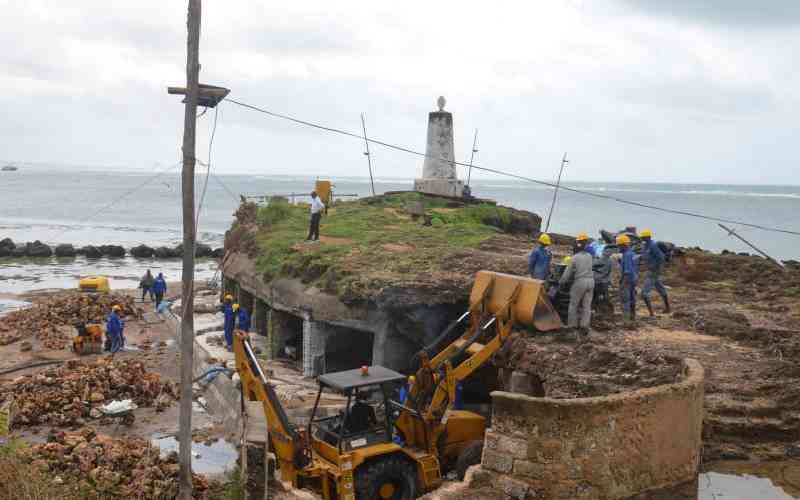
Nelson Maina is the Communications and PR Manager Elgon Kenya Limited
NAIROBI, KENYA: News that last season's depressed rains took a toll on overall food production in the country's food basket regions is worrying.
It portends a situation, which analysts have warned, where we will experience a dip in even food availability in days to come with the ripple effect of a jump in prices.
Yet this is the sad reality we need to start warming ourselves to. Already, the weatherman has sounded a warning that 2017 is going to be one of the driest years with intermittent rainfall.
To the over 70 per cent of smallholder farmers, majority who still rely on rainfall for food production, this is shattering. But it is even a great cause for concern in a country that already has about two million hungry people.
With scientists predicting even harsher conditions, one can only picture scorched barren farms with stunted crops. Or we could look beyond the reality of nature and choose to get smart with the times.
In a country that has been rubber stamped by international institutions like FAO and World Bank, as so lush and verdant that it can comfortably feed its people and Africa, we have no business wallowing in the narrative of weather vagaries.
A shift in policy, mindset and practice is all we need to halt the hunger cycle. It has been done elsewhere, we can definitely do it here.
Brain-fed agriculture as opposed to rain-fed is and will always be our saving grace. From simple practices like irrigation, water harvesting and green house farming, we can comfortably produce food for our people year round.
And what joy would it be to see our smallholder food producers driving this agricultural revolution.
Indeed according to a report, Water for Wealth and Food Security by the International Water Management Institute (IWMI), supporting farmer-driven investments in agricultural water management and expanding the use of on-farm water management techniques could increase yields up to 300 per cent in some cases, and add hundreds of billions of shillings to household revenues across Sub-Saharan Africa.
As it is, water resources are often sufficient, but farmers lack the means to harvest it. As a result of Sub-Saharan Africa's renewable water resources, the UN Food and Agriculture Organization reports that only three per cent is withdrawn for agriculture.
Likewise, only four per cent of arable land is equipped for irrigation, of which less than six per cent is serviced by groundwater.
Experts believe that improving water management capabilities especially through irrigating farms and encouraging smallholders' greenhouse farming could now unleash smallholder farming and become a major driver of economic growth, poverty reduction and food security.
The Government deserves a pat on the back for taking the front seat in opening up millions of acreage to irrigation, water harvesting and digging up of water dams.
Efforts meant at roping in smallholder farmers into this revolution are gradually paying off especially because the private sector has also stepped in to make it easy to produce crops year round.
Agro-input companies like Elgon Kenya in its resolve to walk with smallholder farmers throughout the food production journey has rolled out climate smart innovations that are paying off.
The miniature portable drip irrigation kit, dubbed Kadogo Drip Kit has become an instant hit with majority of small scale farmers due to its affordability and effectiveness.
The kit offers farmers 90 percent efficiency in water conservation. Costing six times lesser than the conventional kits in the market it ensures majority of farmers with small lands to irrigate the little they have utilizing all the water they pump to the farm.
 The Standard Group Plc is a multi-media organization with investments in media
platforms spanning newspaper print operations, television, radio broadcasting,
digital and online services. The Standard Group is recognized as a leading
multi-media house in Kenya with a key influence in matters of national and
international interest.
The Standard Group Plc is a multi-media organization with investments in media
platforms spanning newspaper print operations, television, radio broadcasting,
digital and online services. The Standard Group is recognized as a leading
multi-media house in Kenya with a key influence in matters of national and
international interest.
 The Standard Group Plc is a multi-media organization with investments in media
platforms spanning newspaper print operations, television, radio broadcasting,
digital and online services. The Standard Group is recognized as a leading
multi-media house in Kenya with a key influence in matters of national and
international interest.
The Standard Group Plc is a multi-media organization with investments in media
platforms spanning newspaper print operations, television, radio broadcasting,
digital and online services. The Standard Group is recognized as a leading
multi-media house in Kenya with a key influence in matters of national and
international interest.










